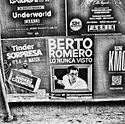StoneNYC
Member
I think this is an interesting read
http://www.iconicphoto.com/pdf/the_zone_system_1104.pdf
The Zone concept was conceived by Fred Archer, a photographer and instructor at
the Art Center College in Los Angeles. In a series of articles in U.S. Camera magazine in
1939-1940, he set out a unified approach to determine the degree of adjustment necessary
to improve contrast to remedy the effects of lighting differences in an image. Archer built
on the system of aperture f-stops that had been adopted by the photography industry. He
introduced a matrix that tied f-stop gradations to a virtual scale from absolute black to
maximum light, allowing photographers to map images for brightness using readily
applicable f-stop equivalents.
Ansel Adams read the material with interest, communicated with Archer and took
the project in hand. Adams went on to further develop and popularize the Zone System,
elaborating the framework in the terminology used today.
Sounds to me like another Tesla vs Edison story... Lol








 glad you've mitigated many of the issues, I know I could too, but it would mean changing a lot of my practices and chemicals I've been accustomed to using and I'm not willing to do that just for one film, though I agree I do like the look of FOMA at least the 100.
glad you've mitigated many of the issues, I know I could too, but it would mean changing a lot of my practices and chemicals I've been accustomed to using and I'm not willing to do that just for one film, though I agree I do like the look of FOMA at least the 100.

